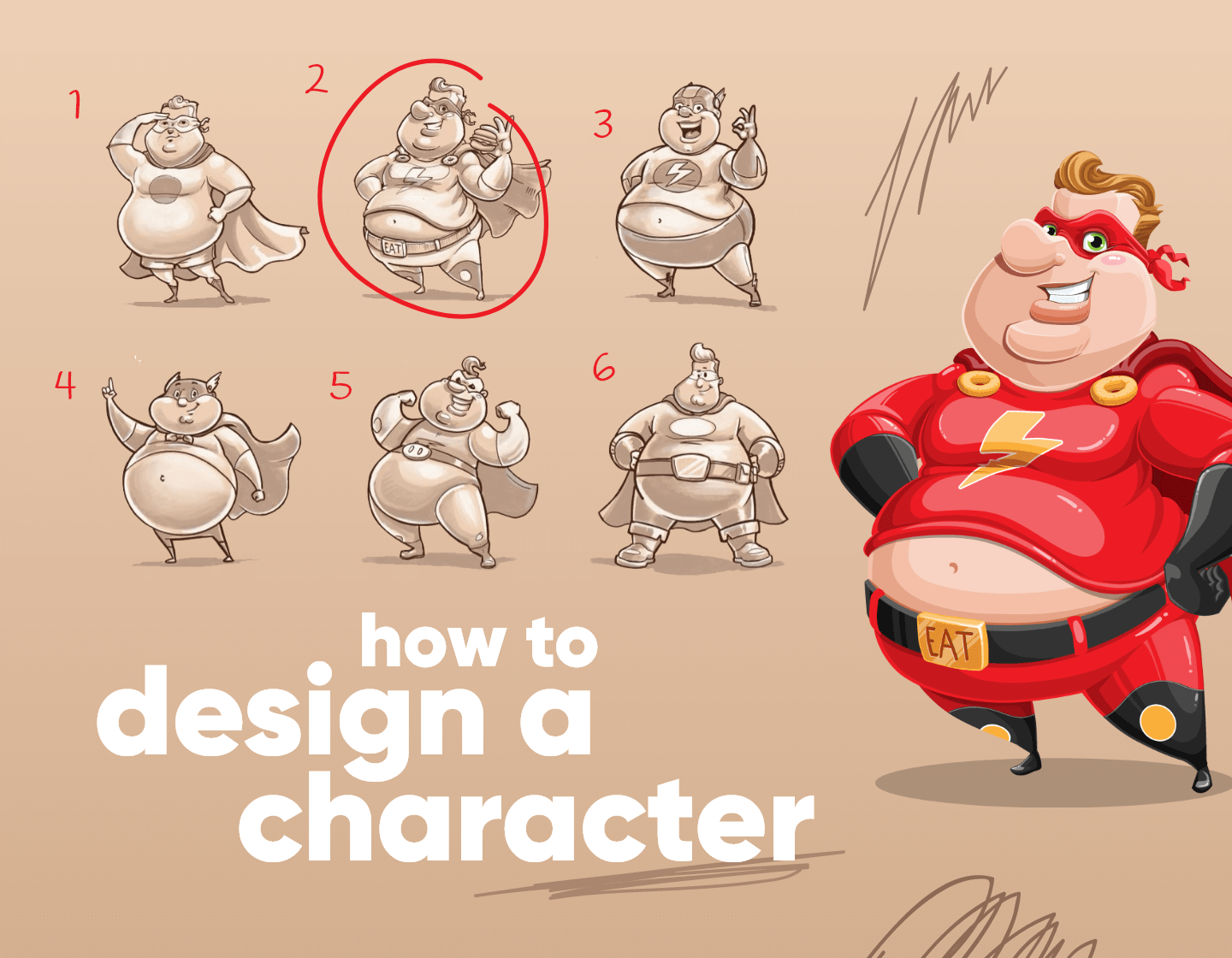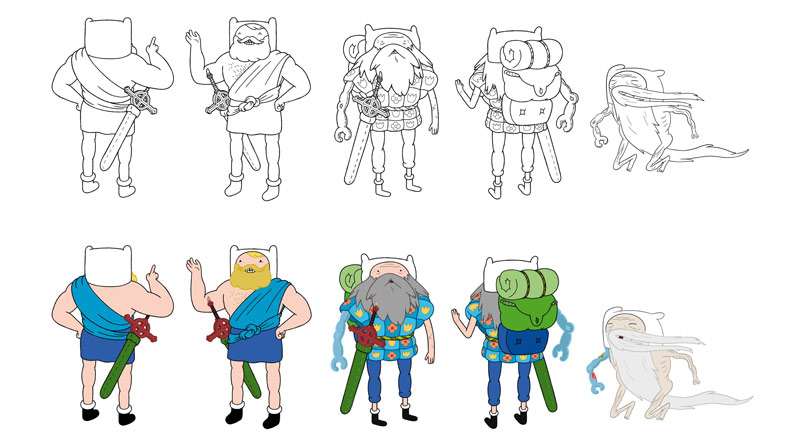Table Of Content

Of course, if you’re hoping to fine tune your craft in a specific genre — say, children’s books — then you should focus on reading anything you can get your hands on in that genre. This way, you’ll stay on top of trends, you’ll be familiar with any and all references, and you’ll get a better understanding of what the target audience enjoys. Plus, if this is your genre of choice, it should be pretty enjoyable. Illustrators, much like authors, need to have a good idea of who their target audience is to make sure you’re speaking a pictographic language they will understand. But most designers today have turned to digital devices for their masterpieces.
How to Design A Character: Unleash Creativity in 6 Easy Steps
Additionally, you are going to want to put together a client presentation. These presentations often include a variety of secondary poses (including neutral ones), outfits, facial expressions, and close ups and side profiles of the face. To block in value, you’ll want to choose contrasting shades of grey for shadows, mid-tones, and highlights. Working in a separate layer beneath your sketch, color over your character with the mid-tone. Most artists recommend starting your render with a focus on value.
Steps to Create A Good Character
Learn more about animation and the various types that exist in our next article. In addition to shapes, character designers have to be intentional and strategic with their use of color. Having established your essentials, it’s time to pick a few details that can represent your message in visual form. Say you want to communicate trust and stability, then you can drill down on the square shape motif and make it extra obvious with a non-threatening color palette. Or perhaps you want to draw a relatable and clumsy character, so you give them two left feet, literally.
More Design and Illustration Resources From Envato Tuts+
Your image composition can be a useful tool in revealing your character's personality. Then add your shadows and highlights with dark and light grey to add basic form to your character. As an exercise, try duplicating your favourite silhouette and fi lling in the form in different ways to give you different characters.
With this in mind, even if your character is meant for a brand and doesn’t have to be that complex, they still need to have a strong presence and personality. Sometimes it’s hard to start with the general description, especially if you start from scratch. You can always finish with the physical and personality traits first and go back to finish the overview. These exaggerated characteristics can be the difference between an audience perceiving a character as heroic or menacing. This video by BaM Animation explains how and why exaggeration is the ultimate storytelling tool in character design. Out of all three of these fundamental components of character design, exaggeration is arguably the most important as it pertains to storytelling.
11 top tips for creating fearsome creatures - Creative Bloq
11 top tips for creating fearsome creatures.
Posted: Wed, 30 Sep 2015 07:00:00 GMT [source]
Play around with proportions and dimensions to direct attention
Just by observing a person, you can tell they’re cold, happy, flirtatious, disappointed, impatient, and so on. It’s the body posture, the way someone relaxes their hands, and the facial expressions that tell more than a written page of description could. If your character is a ninja or assassin, try to convert the fact they’re fast, agile, and stealthy by making them small, thin, with long limbs, ideal to climb and hang from a roof.
Poseidon
In the Character Design Crash Course workshop at Pictoplasma 2019, Jurevicius and Rilla Alexander asked attendees to sketch their character in poses held by other attendees, life drawing style. This makes it much easier to go forward and backward in the animation process and tweak viewing directions and the look of the characters without having to make test renders all the time. If you are working on a team or with a client, this can be a good time to gather feedback before going any further—in which case, you may want to provide a few (no more than three) options.
Isabel is a freelance journalist and copywriter who specialises in the arts. I’ve always been a serial playlist- maker and I often like making them for my friends, tailoring music to how I perceive them as a person. Almost all of us have some form of subscription to a one music-sharing platform or another and, in theory, your character might too. You can really experiment here and work in a location that you might not normally work in. I like to get set up in coffee shops and natural environments the most. Take it in, write it down, and the best part is that you don’t think.
Woah! These original Disney character designs are really unsettling - Creative Bloq
Woah! These original Disney character designs are really unsettling.
Posted: Thu, 10 Nov 2022 08:00:00 GMT [source]
Process to design
This signals to the reader what type of character they’re seeing and how they’re supposed to feel about them. 👆 Note that though each Scooby Doo character has a unique color palette, some of the colors are echoed in other characters to create cohesion. If you apply all of these tricks to your silhouette(s), it’s time to start thinking about how to add color back in.
Artists always analyze successful characters to see what makes them great. They also analyze less successful ones to see why they fail to connect with audiences. When it comes to using warm vs cool colours there are a few key things to consider.

For example, using a concave (c-shaped,) line of action for your character’s pose can help them seem timid or sad, whereas a convex curve can be used to make them seem more confident or happy. To decide which parts of your character to exaggerate try identifying the primary traits of their personality and storyline. Maybe your character is a shy and really good listener so they have big ears and a smaller mouth. Creating multiple sketches of your character allows you to fine-tune your design as it helps you identify the most effective elements in each iteration. When you first design a character, it is super important that you create multiple different iterations.
In addition, researching the work of other artists on similar concepts or designs for similar audiences can also help you see what is common and how your character can be different. Fortunately, character design is a fairly old practice, and there are common tips and workflows that can guide aspiring designers from concept to finished artwork. With that said, every artist is going to have a different approach that works for them. When we think of some of our favorite characters, from Superman to Pikachu, design is often that last thing that comes to mind. Character design is a captivating art form that lies at the heart of many creative endeavors, from animation and video games to literature and visual storytelling.
When sculpting in any package, make all of your big changes at a low level of subdivision before you get carried away with sculpting detail. Your levels of detail should correlate to your subdivision levels. Duplicating a silhouette and exaggerating various parts of its anatomy using the Liquify tool in Photoshop can be a very useful way of experimenting in a non-destructive way. For example, a creature that lives in the dark may have very large eyes to take in small amounts of light, like an owl. This link with reality will make your character more believable, and will help tell their back story.
This one is tough, NGL, I struggle with color too sometimes, because I don't want to take a random choice at designing something. Whether the decision is made by feeling or deliberate thinking, at least there is a reason there and that's what matters, if you can elaborate on it and expand it, that's perf. In the recent projects I've published, I captured a very typical work process for me. Many of the responses and inquiries I got were praise on the use of design thinking.

The limited release only covers the first section of the game, but it already gave players an in-depth idea of what to expect — spoilers, it looks very sexy. You can save yourself a lot of time with the transform and transform tools in Maya. Remember to use references [very important], for your chosen elements and also the body gesture. In my case I changed the gesture looking for something similar to the personality. As I wrote above, I started with a simple sketch and eventually refined it until I reached the third sketch.
As you solidify the fundamental aspects of your character design, enter the phase of refinement and iteration. Infuse intricate details, play with a spectrum of colors, and make adjustments based on valuable feedback. Try different color palettes to discover the one that perfectly resonates with your character. Be sure to keep these character design tips in mind when you are designing your next character.


No comments:
Post a Comment